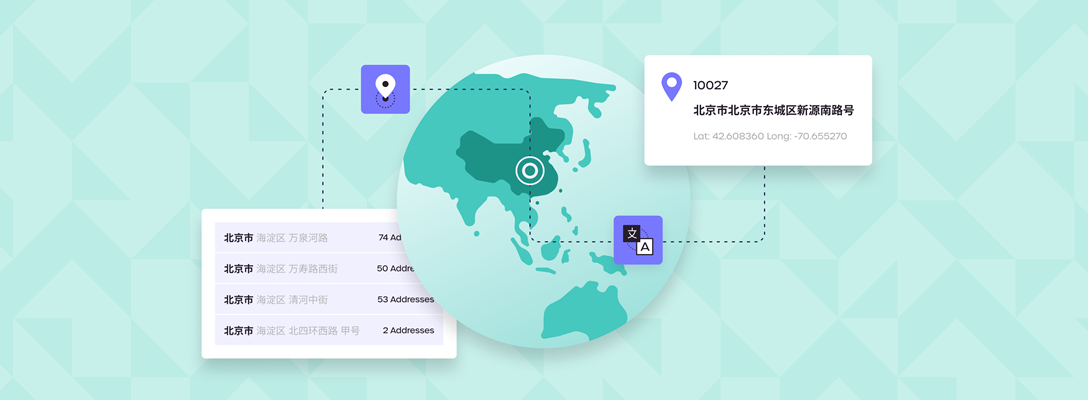
Tackling the complexities of Chinese addressing
Managing international address data is complex. In China, between the nuances of local address formatting and language script challenges, verifying addresses delivering goods and services can be an arduous task. Without an address specialist, international businesses will find it difficult to reach their Chinese customers due to constant failed deliveries, poor customer experience and compliance issues.
The challenges of addressing in China
China’s street name and numbering systems baffle businesses time and time again. Mistakes in address formatting could lead to mail that is undeliverable as addressed, requiring costly returns to senders in other countries as well as unsatisfied Chinese recipients.
One of the more obvious issues you are likely to face when dealing with Chinese addresses is the logographic system used to write them. Fortunately, China uses a standard system (pinyin) to transliterate between Chinese characters and Latin script, so the variance in written address strings transliterated from Chinese is much lower than transliterated from other scripts, such as Cyrillic or Hellenic. The order in which those strings are written varies, however. Addresses written in Chinese characters are commonly shown in the reverse order to the same addresses when written in a Latin script. For example, in this address
中国,山东省,青岛市
香港东路6号,5号楼,8号室
李小方 (先生)收
the country, province and city are on the top line; the building and street information are on the second line; and the recipient’s name and title are on the last line. This order will most commonly be reversed and separated over more lines when written in Latin script.
Mr. Li Xiaofang
Apt. 8, Building 5,
6 Hongkong East Road
Qingdao City
Shandong Province
People’s Republic of China
Chinese addresses often contain tags to designate what each string indicates, and these find their way into the Latin script versions. In the address listed above, the suffix Shi (市), for example, means ‘city’, sheng (省) means ‘province’, lou (楼) means ‘building’ and shì (室 or宅) means ‘house’, ‘flat’ or ‘apartment’.
Go international with accurate addressing and global location data

China also has a six-digit postal code system (used from China for Hong Kong and Macao addresses too), usually written in front of the name of the city or province, like this:
100050 Beijing
Once you have mastered the challenges of Chinese script, addresses tend to follow patterns we recognise in the West, albeit reversed, and, although often highly descriptive outside urban areas, tags within addresses are helpful to identify each address element.
Cultural coordinates in China
Within Chinese philosophy, the cardinal compass points have great significance, and this is reflected in street addresses. Streets may be divided into east and west or north and south, such as Nanjing dong lu (Nanking Street East), Nanjing zhong lu (Nanking Street Central) and
Nanjing xi lu (Nanking Street West). City street names are known to change up to 16 times, with the building numbering recommencing each time the street name changes.
The Chinese also attach great meaning to numbers, with some considered to bring good fortune and others regarded as bad luck. Whereas superstitions in western countries may see some apartment blocks skip floor number 13, in China, it’s the unlucky number four which is regularly omitted from address numbering systems.
Colours are also important, so avoid printing a Chinese address in red ink.
Get China's most comprehensive premise level address data

Comprehensive premise-level address data in mainland China
We’re helping international businesses deliver to the 140 million Chinese consumers looking to purchase from brands overseas.
The Loqate China Premium Data Set is the most effective way to capture, verify, standardise and enrich address data from customers in China. The data set is integrated into Loqate Address Capture and Address Verify solutions for ease of use within business applications. International businesses trading with China benefit from:
- Access to the most comprehensive premise level address data for mainland China.
- Automated population of Chinese address field in three keystrokes or less, reducing data entry time by 78% and errors by 20%.
- Compliance with regional address data quality requirements for international customer due diligence.
This article was originally published by Loqate, a GBG solution
Sign up for more expert insight
Hear from us when we launch new research, guides and reports.


